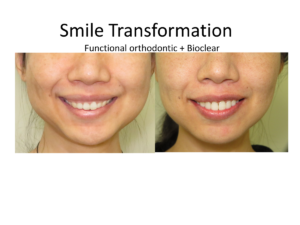
Functional orthodontics is an approach to orthodontic treatment that considers the function of the entire oral and facial structure. It aims to correct dental and skeletal imbalances that can affect your bite, breathing, and overall health. Unlike traditional orthodontics, which primarily focuses on straightening teeth, functional orthodontics addresses the root causes of these imbalances to promote long-term health benefits.

Craniomandibular orthodontics is a specialized area within functional orthodontics that focuses on the relationship between the skull (cranium) and the jaw (mandible). This approach aims to achieve harmony between the upper and lower jaws, which can have a significant impact on overall health and well-being.

Craniomandibular orthodontics involves the use of appliances and techniques to correct imbalances between the cranium and mandible. By addressing these imbalances, we can help improve bite function, reduce pain, and enhance overall facial harmony.
The benefits of functional orthodontics include improved bite function, enhanced facial aesthetics, reduced risk of tooth decay and gum disease, prevention of jaw pain and headaches, and long-term oral health improvements.
Dental bone grafts are usually an outpatient procedure. The procedure is typically done before a dental implant/tooth replacement and usually doesn’t cause any, if very little, pain through the procedure and the healing process.
Interceptive orthodontic treatment, also known as phase one or early orthodontic treatment, is a proactive approach to orthodontic care aimed at addressing and correcting developing dental and jaw issues in children. This treatment is typically initiated at an early age, often between 6 and 10 years old, to guide the growth of the jaw and the incoming permanent teeth, preventing more severe problems in the future.